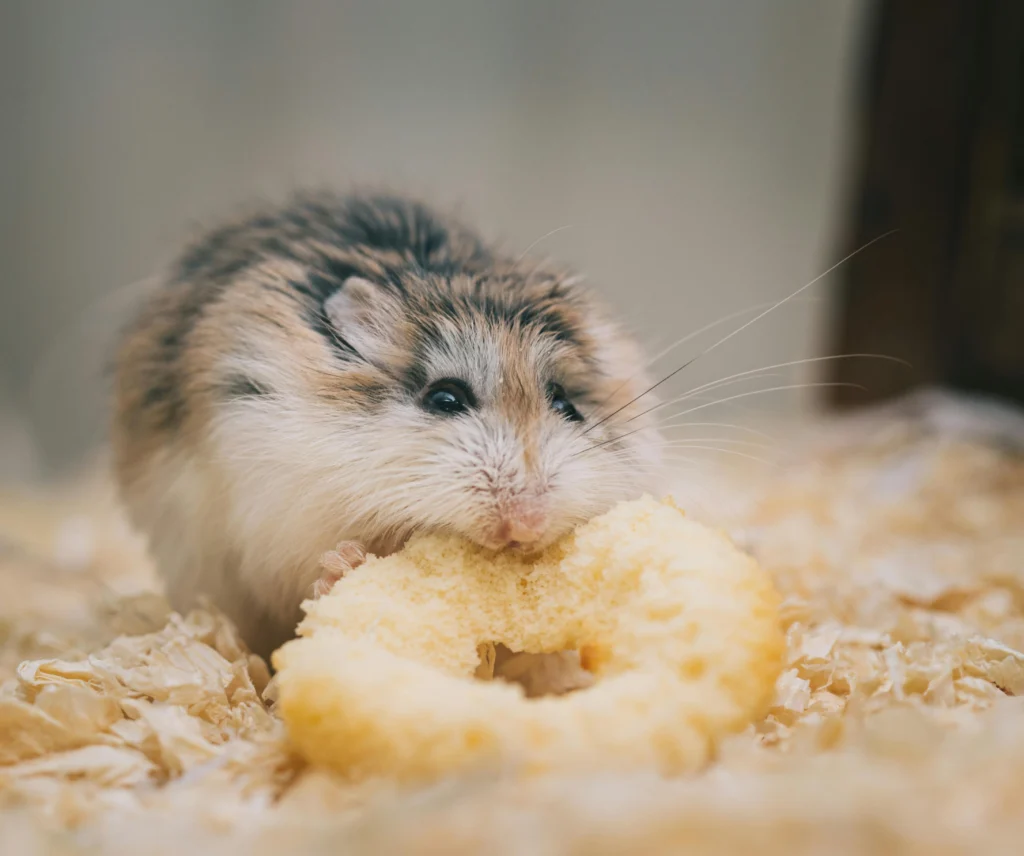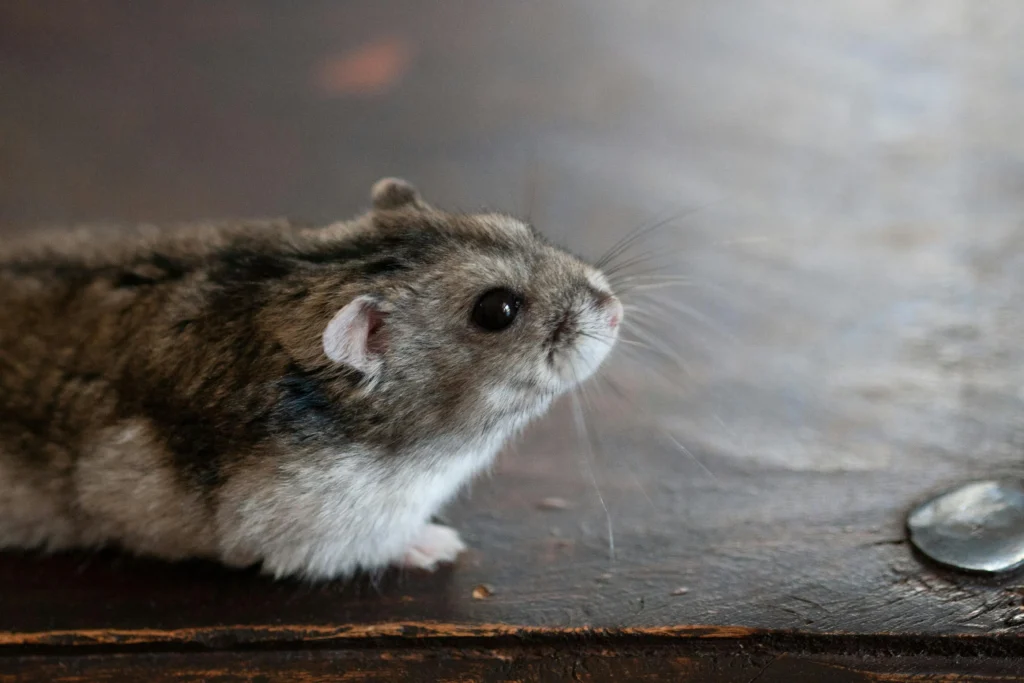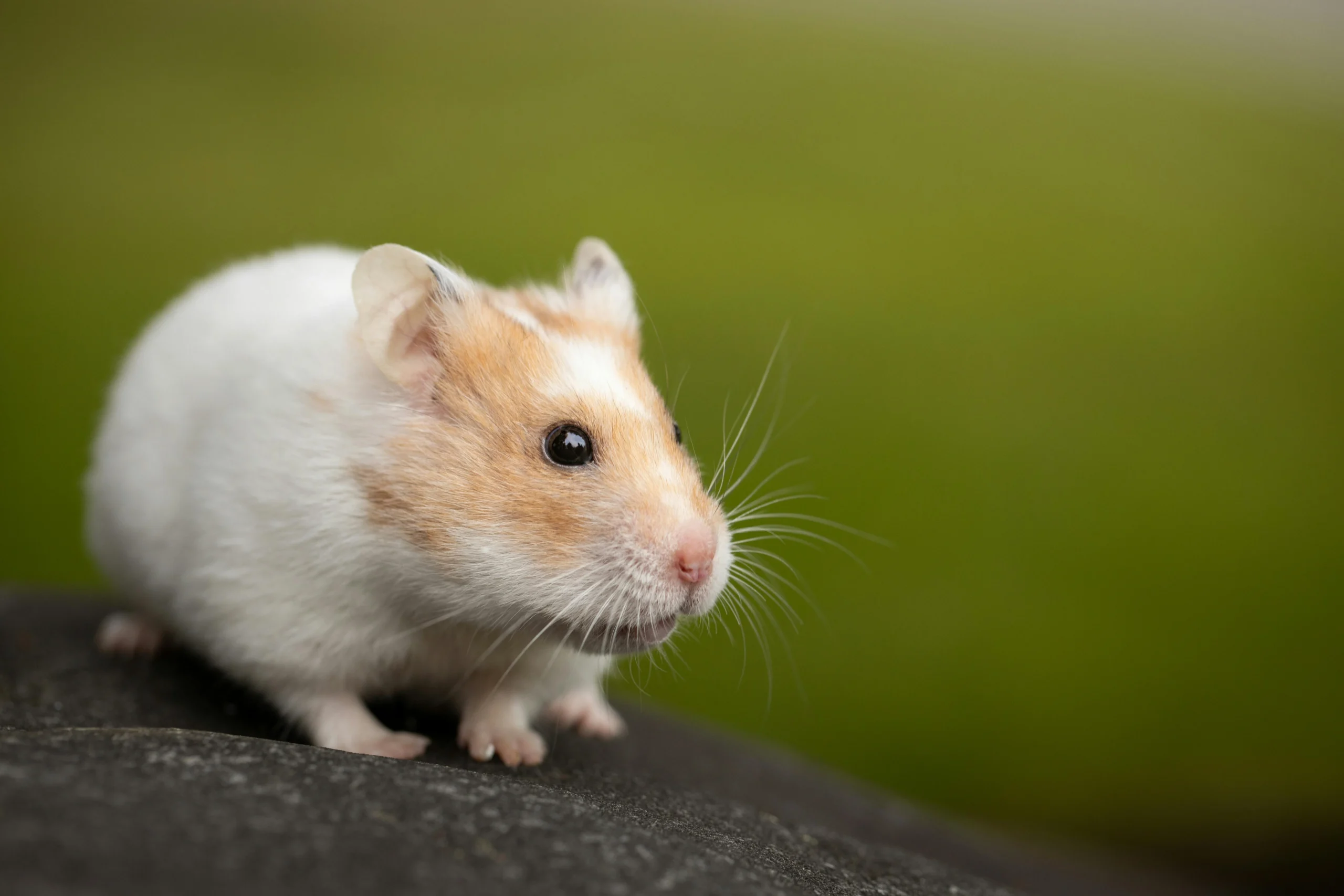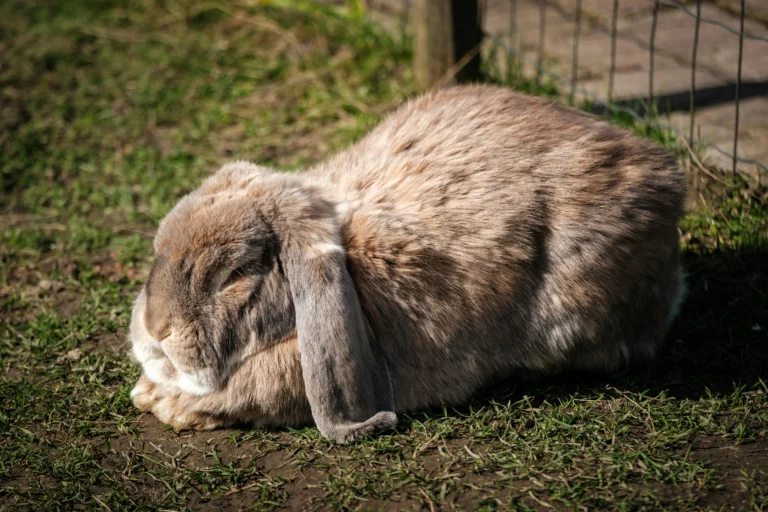How to Care for Your Hamster
Introduction: How to Care for Your Hamster the Right Way
Bringing home a hamster is an exciting experience. These tiny, energetic creatures are full of personality and charm, making them one of the most popular small pets around the world. However, their small size doesn’t mean they’re easy to care for. In fact, learning how to care for your hamster properly is essential if you want them to live a healthy, happy life.
Many first-time hamster owners make the mistake of assuming a cage and some food are enough. Unfortunately, this limited approach can lead to health problems, boredom, and even a shortened lifespan for your furry companion. Understanding the right habitat setup, nutritional needs, hygiene routines, and behavioral cues is key to being a responsible hamster owner.

Hamsters may be low-cost pets, but they need a safe, enriching environment. A cramped cage with poor ventilation or improper bedding can cause stress or respiratory issues. Likewise, an unbalanced diet lacking in essential nutrients can weaken their immune system and energy levels. By exploring how to care for your hamster, you’re not just giving them a better life, you’re creating a stronger bond between you and your pet.
Another important aspect of hamster care is building trust. These animals are prey by nature, which means they can be shy or defensive if not handled correctly. With gentle, consistent interaction and a stress-free environment, hamsters can become affectionate, curious companions that enjoy human company.
Whether you’re a new pet owner or simply looking to improve your hamster’s living conditions, this guide will walk you through all the basics and beyond. From choosing the right cage and bedding to understanding their behavior and providing proper nutrition, every section is designed to help you master how to care for your hamster step by step.
Let’s dive in and make sure your tiny friend not only survives, but thrives.
Table of Contents
Choosing the Right Habitat for Your Hamster
When thinking about how to care for your hamster, the very first step should be providing the right living environment. A hamster’s habitat is much more than just a cage it’s where your little pet will eat, sleep, explore, and feel secure. A well-thought-out setup can significantly improve your hamster’s health and happiness.
🪟 Cage Size and Type
Many people underestimate how much space a hamster truly needs. Despite their small size, hamsters are extremely active animals that require plenty of room to roam. For a single hamster, the minimum recommended floor space is at least 600 square inches, but larger is always better. Wire cages with plastic bases are popular, but many owners also use modified glass aquariums or large plastic bins with proper ventilation.
Your goal is to mimic a natural environment. Choose a habitat that offers space for burrowing, nesting, and climbing. Avoid cages with narrow vertical bars if you have dwarf hamsters, as they can squeeze through or get stuck.
🌿 Safe and Comfortable Bedding
One of the most overlooked parts of how to care for your hamster is selecting the right bedding. Stay away from cedar or pine wood shavings, which can be harmful to their respiratory systems. Instead, go for paper-based bedding that is soft, dust-free, and absorbent.
Depth is also key. Hamsters enjoy digging and tunneling, so offering at least 6 inches of bedding lets them express this natural instinct. It also aids in controlling odors and regulating temperature.
🎡 Enrichment and Essential Accessories
Hamsters thrive when their environment is engaging. Add an exercise wheel, which helps them burn energy and prevents obesity. Ensure the wheel has a solid running surface and is properly sized, at least 8 inches in diameter for Syrian hamsters.
Incorporate chew toys, tunnels, wooden hideouts, and even cardboard rolls to give your pet something to explore and gnaw on. These items stimulate your hamster mentally and physically while helping with dental health.
Creating a safe, clean, and enriching habitat is a vital part of mastering how to care for your hamster. The better the setup, the more active, curious, and content your furry friend will be.

🥦 Feeding Your Hamster a Balanced Diet
When learning how to care for your hamster, providing the right diet is just as essential as giving them a proper habitat. Hamsters may be small, but their nutritional needs are surprisingly specific. A balanced diet strengthens their immune system, enhances energy, and supports overall health and well-being.
🐹 What Should a Hamster Eat?
High-quality hamster pellets or lab blocks should form the core of your hamster’s diet. These are specially formulated to offer the correct balance of protein, fiber, and fat. While seed mixes are often sold in pet stores, many hamsters pick out their favorite parts (usually fatty seeds) and leave the rest, which leads to nutritional imbalances.
To enhance your hamster’s diet, you can add a variety of fresh fruits and vegetables in small amounts. Great choices include:
- Carrots
- Broccoli
- Cucumber
- Apple slices (no seeds)
- Spinach
Avoid citrus fruits, onions, garlic, and anything spicy, sugary, or salty.
🥜 Healthy Treats and Snacks
It’s natural to want to spoil your hamster, but moderation is key. Treats should comprise only a minimal part of your hamster’s overall diet. Small pieces of plain cooked chicken, unsalted nuts, or whole grains like oats can be given occasionally. These snacks offer variety and stimulation, but too much can lead to weight gain and health issues.
Another part of how to care for your hamster is ensuring they have access to safe chewing materials. Hamsters’ teeth grow continuously, so including wooden chew sticks or mineral blocks helps maintain dental health.
💧 Water and Feeding Habits
Fresh water must always be available. A sipper water bottle with a metal spout is ideal, as it stays cleaner than a bowl and prevents spills. Check it daily to ensure it’s not clogged and refill it with clean water.
Feed your hamster once daily, ideally in the evening when they’re naturally more active. Remove any uneaten fresh food after a few hours to avoid spoilage.
Feeding your hamster properly is a vital part of understanding how to care for your hamster. A nutritious, well-balanced diet not only extends their lifespan but also keeps them active, alert, and happy. Their presence is one that will thrive emotionally as well as physically.
🐾 Handling and Bonding With Your Hamster
Learning how to care for your hamster involves more than just providing food and a clean cage. Developing a trusting bond with your hamster is essential to its emotional health and can make your experience as a pet owner more rewarding. Hamsters are naturally cautious, but with gentle persistence, they can grow to enjoy your company and even look forward to your presence.
🐹 Start With Observation
Before you even try to touch your hamster, spend a few days simply observing its behavior. Watch when it eats, where it sleeps, and how it explores its surroundings. Sit near the cage and speak softly so your hamster becomes familiar with your voice. This low-pressure approach helps build trust from the beginning and is often overlooked by first-time owners eager to handle their pet right away.
🤲 Approach Slowly and Respectfully
Once your hamster seems comfortable moving around while you’re nearby, you can begin the bonding process. Gently place your hand inside the cage without trying to touch or grab it. Let your hamster sniff and explore your hand. Over time, you can offer a small treat like a sunflower seed or a tiny piece of cucumber from your palm. Allow your hamster to come to you this teaches it that you’re safe and non-threatening.
Avoid sudden movements or loud noises. Always scoop from underneath using both hands, forming a “cup” to lift the hamster. Never grab from above, as this mimics predator behavior and can frighten your pet.
🕒 Keep Sessions Short and Positive
For the first week or so, limit handling to just a few minutes each day, preferably in the evening when hamsters are naturally more active. Gradually extend the duration as your pet becomes more relaxed in your hands.
Use a soft surface like a couch or a bed during early interactions in case your hamster wiggles free. Never force your hamster to interact. Patience is a key element of learning how to care for your hamster.
The bond you build through calm and respectful handling plays a major role in your hamster’s happiness. With consistent effort, your hamster will feel secure, trust you, and even look forward to spending time together.

🩺 Keeping Your Hamster Healthy and Clean
One of the most vital parts of understanding how to care for your hamster is maintaining their health and hygiene. Though these small animals are generally low-maintenance, they still require regular care to stay in top condition. Keeping an eye on your hamster’s physical and emotional health helps ensure they enjoy a long, happy life.
🧼 Clean Habitat, Healthy Hamster
A clean environment is the first step in keeping your hamster healthy. Dirty cages can lead to respiratory problems, skin irritation, and bacterial infections. Spot-clean your hamster’s cage every day by removing soiled bedding and leftover food. Do a full cage clean once a week, replacing all bedding, washing food bowls and water bottles, and sanitizing any toys or accessories with mild, pet-safe soap and warm water.
Choose unscented, absorbent bedding made from paper or aspen shavings, and make sure it’s deep enough for burrowing, at least 6 inches. Avoid cedar and pine shavings, which release aromatic oils that can harm your hamster’s respiratory system.
👀 Signs of a Healthy Hamster
A big part of how to care for your hamster is knowing what healthy behavior looks like. A healthy hamster is typically lively, attentive, and inquisitive. Their eyes should be bright and clear, fur should be clean and fluffy, and they should groom themselves regularly.
Watch for signs of illness such as:
- Lethargy or sudden changes in activity
- Hair loss or scabs
- Labored breathing or sneezing
- Loss of appetite or weight
- Loose stools or wet tail (a severe condition that needs urgent veterinary care)
Hamsters often hide symptoms, so subtle changes may be your first warning. If anything seems off, don’t delay, consult a veterinarian experienced with small animals.
✂️ Grooming and General Hygiene
Hamsters are natural groomers and rarely need bathing. In fact, water baths can stress them out and lead to illness. Instead, provide a sand bath (not dust) so they can roll and clean themselves naturally. For long-haired breeds, gentle brushing once a week can help prevent matting.
Regularly trim overgrown nails if needed, and ensure chew toys are always available to help manage teeth length, which continues to grow throughout their lives.
Staying on top of cleanliness and health monitoring is essential in learning how to care for your hamster. With proper attention, your hamster will stay active, clean, and thrive in your care.
🧠 Creating an Enriching Environment for Your Hamster
One of the most overlooked yet critical aspects of how to care for your hamster is mental and physical enrichment. Hamsters are curious, energetic animals that thrive in environments where they can explore, dig, climb, and play. A dull, unstimulating space can lead to boredom, stress, and even aggressive or self-destructive behaviors.
🏡 Design a Hamster-Friendly Habitat
Your hamster’s enclosure isn’t just a cage, it’s their whole world. A basic wire cage might meet minimum standards, but it doesn’t give your pet much to engage with. Instead, opt for a spacious enclosure with a solid base. A large glass tank or a specially designed hamster habitat with multiple levels offers more room to explore.
Provide at least 600 square inches of floor space (bigger is always better), and use a deep bedding layer for burrowing one of your hamster’s natural behaviors. Add multiple hideouts, tunnels, and platforms to make the enclosure dynamic and engaging.
🧸 Toys, Tunnels, and Challenges
Providing enrichment toys is a fun and effective way to support your hamster’s mental and physical health. Include a variety of:
- Wooden chew toys to prevent teeth overgrowth
- Cardboard tubes and mazes
- Climbing ladders and bridges
- Foraging toys that encourage natural scavenging behavior
Switch out toys weekly or rearrange their layout to prevent boredom. Even simple additions like toilet paper rolls, shredded paper, or a handful of hay can spark new curiosity.
🏃 The Importance of Daily Exercise
Exercise is another key piece of how to care for your hamster. A durable running wheel with a solid surface is essential. Make sure it’s the right size, at least 8 inches in diameter for dwarf hamsters and 11 inches or more for Syrians to prevent spinal issues.
In addition to the wheel, consider offering supervised playtime outside the cage. A secure playpen filled with toys and tunnels allows your hamster to stretch its legs and enjoy a change of scenery. Always keep a close watch during these sessions to ensure your hamster’s safety.
An enriching environment not only supports your hamster’s health but also reduces stress and strengthens your bond. As part of learning how to care for your hamster, creating a stimulating, safe habitat is one of the most valuable things you can do.
🐹 Understanding Hamster Behavior and Communication
When exploring how to care for your hamster, it’s important to realize that these little creatures have their own ways of expressing feelings and needs. Unlike dogs or cats, hamsters rely heavily on body language and subtle behavior cues to communicate. Learning to understand these signals is crucial to building trust and ensuring your hamster stays healthy and happy.
🔍 Recognizing Normal Hamster Behavior
Hamsters are nocturnal by nature. They tend to sleep through most of the day and become lively once the sun goes down. If you notice your hamster hiding or burrowing during daylight hours, don’t worry it’s completely normal. At night, you’ll see it running on its wheel, digging tunnels, chewing on toys, or hoarding food.
Regular activities that signal a healthy hamster include:
- Nest building and rearranging bedding
- Grooming and cleaning itself
- Collecting and stashing food in its cheek pouches
- Curious exploration of its surroundings
These are all positive signs. They show that your hamster feels secure and is following natural instincts.
🧠 What Your Hamster’s Body Language Tells You
Because they don’t vocalize much, hamsters rely on body movement and posture to communicate. Here’s what to watch for:
- Standing on hind legs: Curiosity or alertness
- Flattening its body close to the ground: Fear or caution
- Quick darting movements: Nervousness
- Yawning or stretching: Relaxation or comfort
Understanding these cues is a big part of how to care for your hamster. For example, if your hamster suddenly becomes jumpy or hides more often, it could be reacting to stress from noise, cage changes, or a lack of sleep.
🚨 Behavior That Signals Trouble
Not all behaviors are harmless. If you see your hamster doing any of the following, it may need attention:
- Excessive biting of cage bars
- Aggression or lunging
- Lethargy during usual active hours
- Loss of appetite or grooming
- Repetitive pacing or circling
These changes can be signs of stress, boredom, or even illness. Always assess the environment first ensure the cage is clean, the temperature is consistent, and your hamster has plenty of mental and physical stimulation.
Paying close attention to behavior is essential in mastering how to care for your hamster. When you understand its silent language, you create a more comfortable and trusting home for your furry friend.
Final Thoughts: How to Care for Your Hamster with Confidence
Caring for a hamster may seem simple at first glance, but it’s a responsibility that requires patience, knowledge, and genuine care. When you take the time to understand how to care for your hamster, you’re not just meeting its basic needs, you’re also creating a safe, enriching environment where your pet can thrive emotionally and physically.
From choosing the right cage and providing a balanced diet to keeping their home clean and recognizing their behaviors, every small detail matters. A hamster might be tiny, but its needs are big when it comes to attention, stimulation, and comfort. Consistency is key, whether it’s with feeding routines, daily handling, or health checks.
It’s also essential to build trust. Unlike other pets, hamsters can be easily startled or stressed. Gaining their trust is a gradual process, but one that creates a strong bond over time. By approaching your hamster gently, respecting its space, and observing its behavior, you lay the foundation for a long-lasting relationship.
Don’t forget that part of knowing how to care for your hamster includes being prepared for unexpected changes. If you ever notice signs of illness, unusual behaviors, or shifts in appetite or energy, act quickly. Early attention can prevent serious health issues.
In the end, a happy hamster reflects a responsible owner. With the right care, your hamster will not only survive it will truly thrive. Whether you’re a first-time pet owner or expanding your furry family, taking the time to learn and apply proper hamster care makes all the difference.
❓ FAQ: How to Care for Your Hamster
🐹 What’s the most important part of learning how to care for your hamster?
The most important aspect of hamster care is creating a stable, low-stress environment. This includes a proper-sized enclosure, quality bedding, clean water, and a consistent feeding routine. Giving your hamster space to burrow, hide, and explore helps it feel safe and comfortable in its surroundings.
🧽 How often should I clean my hamster’s habitat?
When considering how to care for your hamster, cleanliness plays a key role. Remove soiled bedding and uneaten food daily to keep the cage clean and fresh. Perform a full clean every 7–10 days, which involves changing all bedding, washing the enclosure with mild pet-safe soap, and sanitizing food and water containers.
🍽 What should a healthy hamster diet include?
A balanced diet is essential when thinking about how to care for your hamster properly. High-quality hamster pellets should be the main food source, but you can also include small portions of fresh vegetables like cucumber, broccoli, and spinach. Avoid citrus fruits, garlic, onions, and anything high in sugar or salt.
🧠 How can I keep my hamster mentally stimulated?
Hamsters are naturally curious creatures and depend on both mental and physical enrichment to truly flourish. Include tunnels, chew toys, hideouts, and exercise wheels in their cage. Occasionally, rearranging cage items and providing foraging treats can stimulate your hamster’s mind and keep them content and active.
🧒 Are hamsters good pets for young children?
Hamsters can be good pets for responsible children under adult supervision. However, because they are nocturnal and easily frightened, it’s important to teach kids how to care for their hamster gently and respectfully. Proper handling, patience, and understanding your hamster’s schedule are key to a good relationship.








One Comment